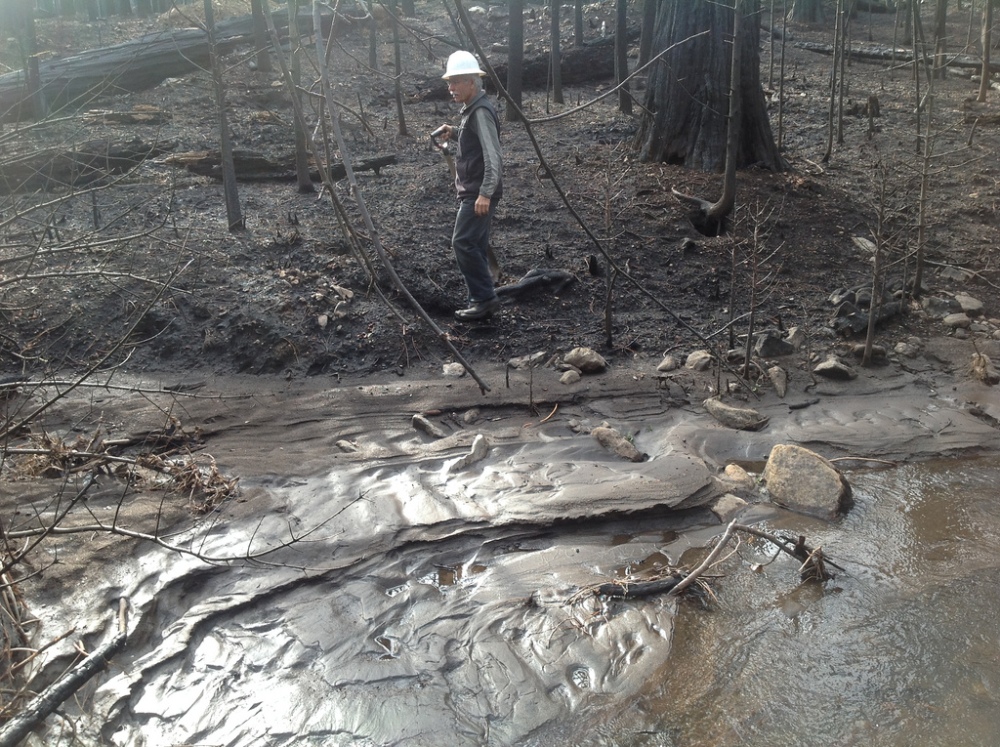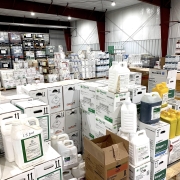Undermanned EPA Delays Action on Lead in Drinking Water
For second time, draft of new health regulation is deferred.

A sign above a bathroom sink in Flint, Michigan, from February 6, 2016, instructs people not to drink the water because of high lead levels. The EPA has once again delayed publication of new federal lead rules. Photo © J. Carl Ganter / Circle of Blue
By Brett Walton, Circle of Blue
Even after the Flint scandal reawakened the nation to the dangers posed by lead drinking water pipes, the U.S. Environmental Protection Agency appears to be in no rush to strengthen federal health standards.
Years after Flint declared a state of emergency in December 2015, the agency is delaying publication of rules that could prevent lead poisoning. The agency now expects a draft rule to limit the risks from lead and copper in drinking water to be published in January 2018. That is six months later than the timeline the EPA announced a year ago.
When asked for an explanation, the EPA provided few answers. “EPA’s semiannual regulatory agenda reflects the Trump administration’s commitment to refocusing the agency on our core mission of protecting the nation’s air, water, and land while reducing unnecessary regulatory burdens on Americans,” Enesta Jones, EPA spokeswoman, wrote in an email to Circle of Blue.
Alan Roberson, executive director of the Association of State Drinking Water Administrators, a group that represents state drinking water programs, had a different assessment. President Trump has not nominated an assistant administrator for water, who would normally make the final call on the contents of a rule, Roberson told Circle of Blue. The turmoil in the Trump administration has broken the chain of command at the EPA, said Roberson.
Without the water administrator in place, the draft rule needs to go directly to EPA Administrator Scott Pruitt, then to the Office of Management and Budget for review. Even the new timetable for the public release of a draft rule is in doubt. “The likelihood of all that happening before January is getting smaller and smaller,” Roberson told Circle of Blue.
The legal process for promulgating a federal regulation is deliberative and time consuming. It starts with releasing a draft of the proposed rule. The draft then goes through a round of public comments followed by agency review. Under the most favorable timeline the final rule, according to the EPA, will not be ready before July 2019, nearly four years after the Flint scandal made national headlines and more than a decade after the agency announced that a stronger lead and copper rule was necessary.
Last year agency officials, after being scolded by members of Congress for their plodding pace, indicated that a draft rule would be published by June 2017 and a final rule by December 2018. The timetable is updated twice a year in the semiannual regulatory agenda, a document that outlines the rulemaking schedule for federal agencies.
Jennifer Chavez, an Earthjustice attorney who is tracking the lead rule revision, told Circle of Blue that the new administration’s reevaluation of Obama-era policies and rulemaking proceedings is “undoubtedly adding” to the delay.
As the agency dawdles, Congress and some state legislatures are plugging small regulatory holes. Ohio enacted a law in September 2016 that requires public water systems to notify households where sampling was conducted of the lead levels in their water. In July 2016, the New Jersey Board of Education ordered public schools to test for lead at all faucets and fountains. Schools and day care centers are not covered by the current lead and copper rule.
Several bills are pending in Congress. A bill from Sen. Tammy Duckworth (D-IL) requires water utilities to test for lead in schools, while legislation from Rep. Dan Kildee (D-MI) sets a nine-month deadline for the EPA’s rule revision and mandates stronger lead standards, sampling techniques, reporting requirements, and data collection. Both Duckworth and Kildee introduced similar bills last session of Congress. Those bills did not pass.
What Will the New Rule Require?
Unique among federal drinking water standards, the rule does not measure lead in water produced by a treatment plant. The rule instead guides public water systems in testing drinking water at household taps, where lead is present in the service lines that branch from city mains into homes. The rule also dictates when a utility must adjust its water chemistry to prevent pipe corrosion. The failure to add anti-corrosion chemicals to the water in Flint after a change in source water caused bits of lead pipe to flake into drinking water.
The EPA published the original lead and copper rule in 1991, then made minor revisions in 2007 to the requirements for sampling, public notification, and the process for utilities to change water sources.
For more than a decade the EPA has been working on “long-term” revisions — those that the agency asserts will require more detailed analysis and consultation. In the spring 2011 regulatory agenda, the EPA anticipated that the draft rule would be published in May 2012, a deadline that is now more than five years in the rearview mirror.
Why has the rule’s development spanned administrations? Roberson, in part, attributes the delays to the rule’s complexity. Unlike for arsenic, where the EPA had to select a single number as a standard, the lead and copper rule has more moving parts. There are legal questions about ownership of pipes and an interactive component because of in-home water testing.
In a white paper published last October, the agency outlined key issues it was weighing as it revised the rule. One proposal is a full lead service line replacement program, which was a point of dissension among members of an agency advisory panel that submitted recommendations in December 2015 on the rule revision. Environmental health experts on the panel argued that the only way to ensure that there is no lead poisoning is to remove all lead pipes. Whether the EPA will endorse this all-out approach is still not clear.
A second issue of concern is sampling methods, which utilities have influenced to their advantage, as the Guardian reported last year. Workarounds to avoid registering high lead levels include flushing water from the tap for several minutes before taking the test sample. The agency is also considering mandatory sampling for facilities not covered by current federal lead rules, such as schools.
A third question is the role for faucet filters. Filters would not be a permanent fix but could be mandated as a stopgap measure after street construction, which frees lead particles in old pipes. Filters are effective at removing lead and other contaminants. But almost no utilities employ them because of strict requirements imposed by regulators.
That white paper was released before the election, but Roberson says that it is still relevant in the Trump administration.
EPA officials are moving forward with at least one element in the white paper. The agency is attempting to figure out the relationship between lead consumed in drinking water and the amount of lead that ends up in a person’s blood, especially in children younger than seven. The statistical models the EPA used to develop its analysis of blood lead levels are being peer reviewed by a panel of eight scientists.
From this work, the EPA will produce what it calls a “health-based” standard that could be used to require action when an individual household has high lead levels in its tap water. The recommendation to do so was made in the December 2015 report from the National Drinking Water Advisory Council. The current rule forces a utility to act only when 10 percent or more of samples across its service area are above a 15-parts-per-billion threshold, a mark that is based on technical considerations and not human health.
Critics of this approach say that a standard directed at household lead levels might, like many parts of the lead and copper rule, end up doing harm. By calling the standard “health-based” — when any amount of lead is injurious — the agency opens the possibility for misinterpretation: that water with lead levels lower than the standard, but that still contain lead, is safe.
“Because there is no known ‘healthy’ level of lead, and health effects have been detected at even very low doses, the term ‘health‐based’ is inherently misleading and ripe for misinterpretation and misapplication,” according to a letter signed by Adrienne Katner, an assistant professor at Louisiana State University Health Sciences Center, and seven other public health advocates, and submitted as a public comment to the EPA.
Brett writes about agriculture, energy, infrastructure, and the politics and economics of water in the United States. He also writes the Federal Water Tap, Circle of Blue’s weekly digest of U.S. government water news. He is the winner of two Society of Environmental Journalists reporting awards, one of the top honors in American environmental journalism: first place for explanatory reporting for a series on septic system pollution in the United States(2016) and third place for beat reporting in a small market (2014). He received the Sierra Club’s Distinguished Service Award in 2018. Brett lives in Seattle, where he hikes the mountains and bakes pies. Contact Brett Walton




 © J. Carl Ganter / Circle of Blue
© J. Carl Ganter / Circle of Blue 




